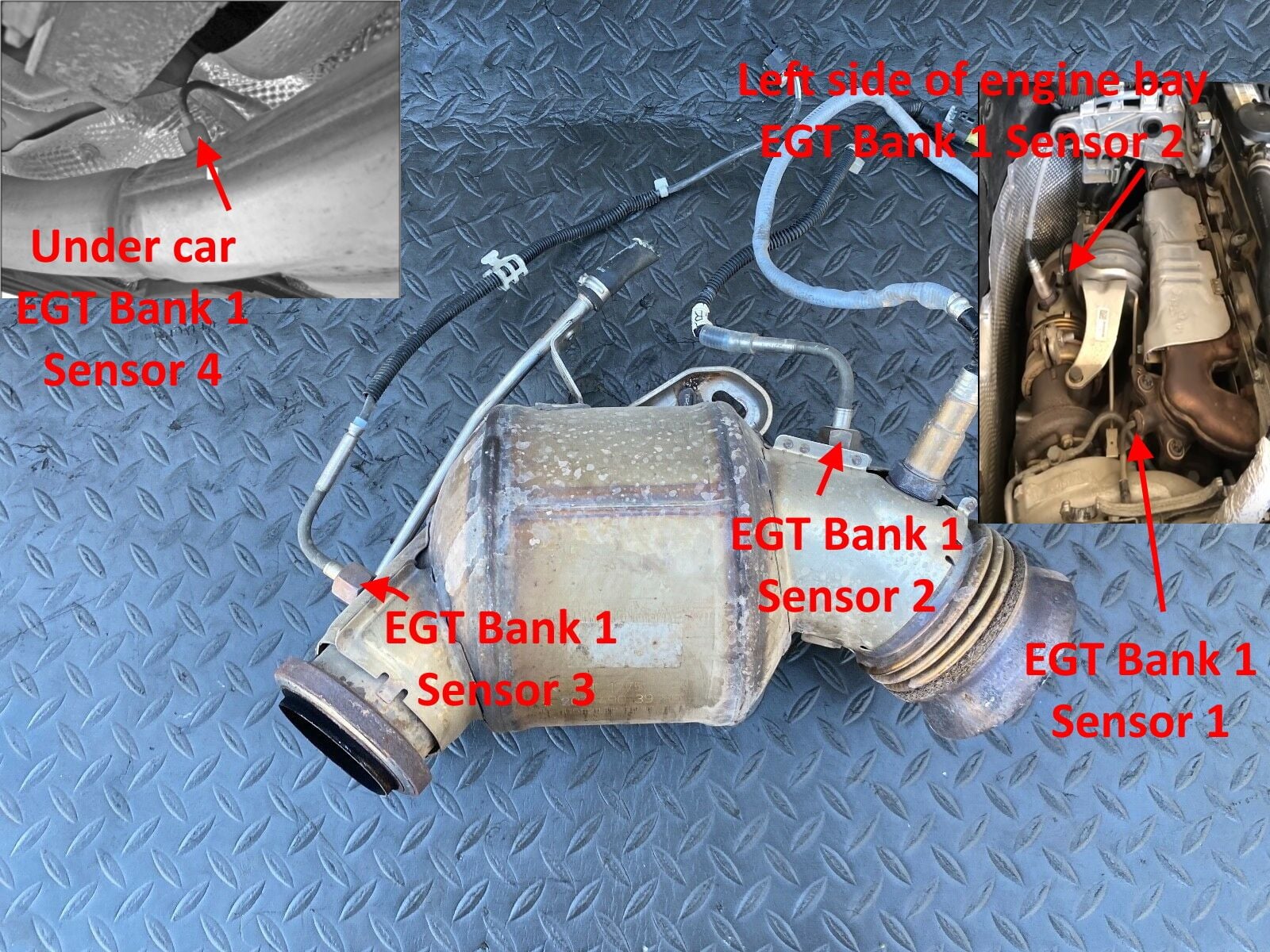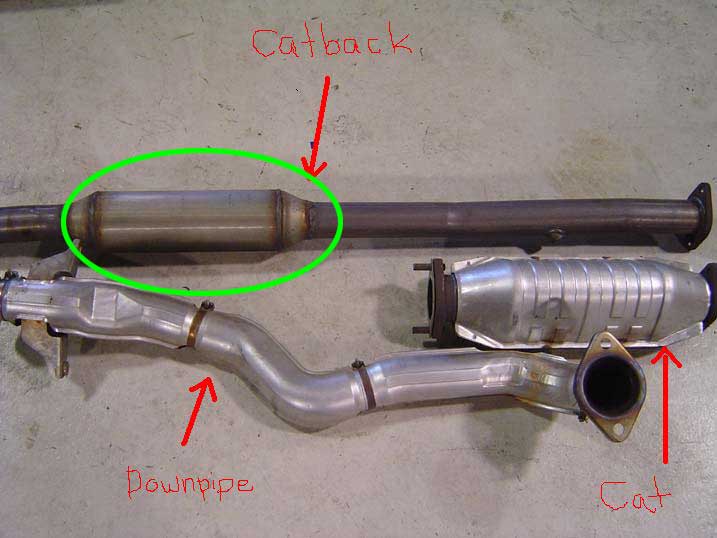Exhaust Gas Temperature Sensor Location
The location of the exhaust gas temperature sensor is in the exhaust system, before the catalytic converter. The purpose of this sensor is to measure the temperature of the exhaust gases. This information is used by the engine control module to adjust the air/fuel mixture and timing of the ignition.
An Exhaust Gas Temperature Sensor, or EGTS, is a device located in the exhaust system of an internal combustion engine. Its purpose is to measure the temperature of the exhaust gases exiting the engine. The data collected by the sensor is used by the engine control unit to adjust the fuel mixture and ignition timing to optimize engine performance and emissions.
The location of an EGTS can vary depending on the make and model of the vehicle. In some cases, it may be mounted in front of or behind the catalytic converter. Other times, it may be installed in the exhaust manifold or downpipe.
It is important to consult your vehicle’s service manual to determine the exact location of your EGTS before attempting any repairs or maintenance.
What is an exhaust gas temperature sensor?
What Does the Exhaust Gas Temperature Sensor Do?
The exhaust gas temperature sensor is a vital part of the modern car engine. It helps to keep the engine operating at optimal temperatures by monitoring the temperature of the exhaust gases. If the sensor detects that the exhaust gases are too hot, it will adjust the fuel mixture accordingly to cool things down.
This helps to prevent engine damage and improve fuel economy.
How Do I Know If My Egt Sensor Is Bad?
If you’re noticing poor engine performance, increased fuel consumption, or your check engine light is coming on, it’s possible that your EGT sensor is bad. Here are a few ways to tell if your EGT sensor is failing: 1. Check Engine Light – One of the first signs that your EGT sensor may be going bad is if the check engine light comes on.
This can be caused by a number of things, so it’s always best to get it diagnosed by a professional to be sure.
2. Poor Engine Performance – If you’re noticing that your engine doesn’t seem to be running as well as it used to, it could be due to a faulty EGT sensor. This can cause decreased power and efficiency, and increased fuel consumption.
3. Higher Exhaust Gas Temps – Another way to tell if your EGT sensor is going bad is if you’re seeing higher than normal exhaust gas temperatures. This can be monitored with an aftermarket gauge or scanner, and will usually show up before any other symptoms appear. If you suspect that your EGT sensor may be failing, it’s important to have it checked out as soon as possible.
A failed sensor can lead to serious engine damage if not replaced in time, so don’t hesitate to get it looked at by a professional!
Can You Clean an Exhaust Gas Temperature Sensor?
An exhaust gas temperature sensor, or EGTS, is a device that measures the temperature of the exhaust gases in an internal combustion engine. The data collected by the EGTS can be used to improve engine performance and fuel economy. Cleaning an EGTS is not a difficult task, but it does require some special care and attention.
To ensure the longevity of your sensor, consider using the APDTY 112785 EGT Exhaust Gas Temperature Sensor. It’s designed to withstand harsh conditions within the exhaust system and can be cleaned easily for optimal performance.
The sensor itself is delicate and can be easily damaged if not handled properly. In addition, the electrical connections on the sensor must be cleaned carefully to avoid damaging them. Here are some tips for cleaning an EGTS:
-Use a soft, clean cloth to wipe away any dirt or debris from the surface of the sensor. Be careful not to scratch or damage the sensor in any way. -Use a mild soap and water solution to clean any build-up on the electrical connections.
Be sure to rinse off all of the soap before reconnecting the sensor. -If there is stubborn build-up on the sensor, you can try using a gentle abrasive cleaner such as rubbing alcohol or vinegar. Again, be sure to rinse off all of the cleaners before reconnecting the sensor.
How Do You Install an Exhaust Gas Temperature Sensor?
An exhaust gas temperature sensor (EGT sensor) is a device used to measure the temperature of the exhaust gases in an internal combustion engine. The EGT sensor is usually installed in the exhaust system, downstream of the catalytic converter. The EGT sensor produces a voltage that is proportional to the exhaust gas temperature.
This voltage can be used by the engine control unit (ECU) to adjust the air/fuel mixture and ignition timing to optimize engine performance and prevent engine damage due to overheating. To install an EGT sensor, first, locate a suitable location for mounting the sensor in the exhaust system. For a smoother installation process, consider using the SCT Performance – 9817 – EGT Sensor Kit for Tuners. It is compatible with tuners, making it versatile for different applications.
For a smooth installation process, you might want to consider the km diesel brand AC3Z-5J213-B Exhaust Gas temperature sensor. It’s designed for easy installation and is compatible with a range of vehicle models. It is important to choose a location where the sensor will not be exposed to excessive vibration or heat.
Once a location has been chosen, drill a hole through which the wires from the EGT sensor can pass. Next, attach the EGT sensor to its mount using nuts and bolts. Be sure to use an anti-seize compound on all threaded connections to prevent galling.
Finally, connect the wires from the EGT sensor to their respective terminals on the ECU.

Credit: mbworld.org
Exhaust Gas Temperature Sensor Failure Symptoms
An exhaust gas temperature sensor, or EGTS, is a device used to measure the temperature of exhaust gases from an internal combustion engine. The measured temperature can be used to adjust the fuel mixture delivered to the engine, in order to improve performance and fuel economy. EGTSs are generally located in the exhaust manifold, where they are exposed to high temperatures.
As a result, they are subject to wear and tear over time, which can lead to failure. There are several symptoms that may indicate an EGTS failure: To accurately diagnose a potential EGTS failure, consider using the kmdiesel 4307101 DEF Catalyst Exhaust Gas Temperature EGT Sensor. This sensor tester can help you determine if your EGT sensor is functioning properly, preventing potential engine damage. -Increased fuel consumption: If your vehicle’s EGTS is not functioning properly, it may deliver too much or too little fuel to the engine.
This will cause the engine to run less efficiently, resulting in increased fuel consumption. -Reduced power and torque: An inefficiently running engine will produce less power and torque than normal. This may make your vehicle feel sluggish when accelerating or climbing hills.
-Check Engine Light: A faulty EGTS can trigger your vehicle’s Check Engine light. If this occurs, you should take your car to a mechanic for diagnosis and repair.
How to Test Exhaust Gas Temperature Sensor
Exhaust Gas Temperature Sensors, or EGT sensors, are used to measure the temperature of the exhaust gas in order to ensure that the engine is operating at peak efficiency. There are a few different types of EGT sensors available on the market, but they all work in essentially the same way. In order to test an EGT sensor, you will need an infrared thermometer and a drill bit.
First, remove the sensor from the vehicle. If possible, try to avoid touching the sensing element itself as this can cause inaccurate readings. Next, drill a small hole in a piece of metal and place it over the end of the sensor so that the tip of the sensor is protruding through the hole.
Make sure that there is good contact between the metal and the sensor. Now, use your infrared thermometer to take a reading from both sides of the metal piece (one side should be facing toward you). The difference between these two readings is what we’re looking for – this will tell us how accurate our sensor is. Ideally, we want our sensors to be within +/- 5% accuracy.
If your results are outside of this range then your sensor may need to be replaced.
Exhaust Gas Temperature Sensor Resistance
An exhaust gas temperature sensor, or EGTS, is a device used to measure the temperature of a vehicle’s exhaust gases. The sensor is typically located in the exhaust manifold or exhaust pipe and produces a voltage signal that is proportional to the temperature of the exhaust gas. The EGTS is an important part of the engine management system as it allows the engine control unit (ECU) to monitor and adjust the engine’s operating parameters to ensure optimal performance and fuel economy.
The resistance of an EGTS varies with temperature, so by measuring the voltage across the sensor, the ECU can determine the exhaust gas temperature. The typical operating range of an EGTS is from -40°C to +1000°C, but some sensors are designed for higher temperatures up to +1600°C.
EGTSs are commonly made from ceramic or metal oxide materials such as zirconia or alumina.
These materials have good electrical insulation properties and can withstand high temperatures without deteriorating.
Conclusion
The location of the exhaust gas temperature sensor is important to know so that you can properly maintain your vehicle. The sensor helps measure the temperature of the exhaust gases, which can be used to improve fuel efficiency and emissions. Knowing the location of the sensor can help you troubleshoot any problems that may arise.






